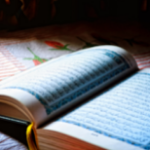Dictionaries and Text Books for Classical, Colloquial and Modern Standard Arabic
languages Tags: Arabic, books, Classical, Colloquial, Dictionaries, modern, Standard, TextNo Comments »
Hans Wehr: A Dictionary of Modern Written Arabic
N.S. Doniach: The Oxford English-Arabic Dictionary of Current Usage
A.S. Tritton: Arabic A Complete Working Course (Classical Arabic)
J.R. Smart: Teach Yourself Arabic (Modern Standard)
T.F. Mitchell: Teach Yourself Colloquial Arabic (Egyptian)
Video Rating: / 5
Learn Arabic | if you decided to start learning Arabic, so let’s build up your vocabulary! In this video, you are going to learn the most common verbs in Arabic language. If you want to start learning Arabic, this video is made for you. . This video will challenge your listening comprehension skills and help you progress in your Arabic study.
Learn common useful Arabic words need to learn and know | in this video you are going to learn more than 180 common useful Arabic verbs in past present and command we really use in our daily life.
#Learn_Arabic
#Arabic_Online
#Speak_Arabic
This Arabic channel is provided with courses in:
* Arabic For Beginners
*Arabic grammar
*Arabic Vocabularies
*Daily Routine in Egypt
*How to say in Arabic
*Funny Arabic Stories
The channel is offering service of teaching Arabic online though zoom. We Teach Arabic (Modern Standard – Colloquial – Islamic Arabic) we Also Teach Quran (Recitation -Memorization – Tajweed ) + Islamic science and if you would like to register in Any of these course please Email use here : ustazmahmoud184@gmail.com…and will contact you immediately inshaAllah
#learn_arabic
#arabic_online
#Speak_Arabic
For more previous Arabic lessons you may watch:
Absolutely in Arabic :https://youtu.be/ZRyr8M2RrIo
How often in Arabic : https://youtu.be/gRhew-ELzSI
Basically in Arabic : https://youtu.be/si4kxKuFXS0
Regardless in Arabic: https://youtu.be/dgZPMgI1kuI
Usually in Arabic : https://youtu.be/elfH20WPoFI
Always in Arabic : https://youtu.be/iOs2wmU4U7s
I don’t care in Arabic : https://youtu.be/5w9glT3oT30
How dare you in Arabic : https://youtu.be/kggODI5YxzQ
► American Phrases in Arabic: https://youtu.be/MYemmoFdH8A
► Thank You & You’re Welcome in Arabic: https://youtu.be/xOVKrQH709o
► Looking forward to in Arabic: https://youtu.be/T-RbDqgbf1c
► Obviously in Arabic: https://youtu.be/z_VHJaB14PQ
► I was going to in Arabic: https://youtu.be/fVu-T2nwYs8
Thank you so much for watching our video! Hope you like it, make sure you like, comment, share and SUBSCRIBE to LearnArabic withustazmahmoud and click the 🔔 icon for notifications when we post a new video.


































































